HOME > Exhibitions > Past
-
Museum Collection Exhibition
Sometsuke: Celebrating Four Centuries of Japanese Porcelain - Saturday, January 7th- Sunday, February 19th, 2017
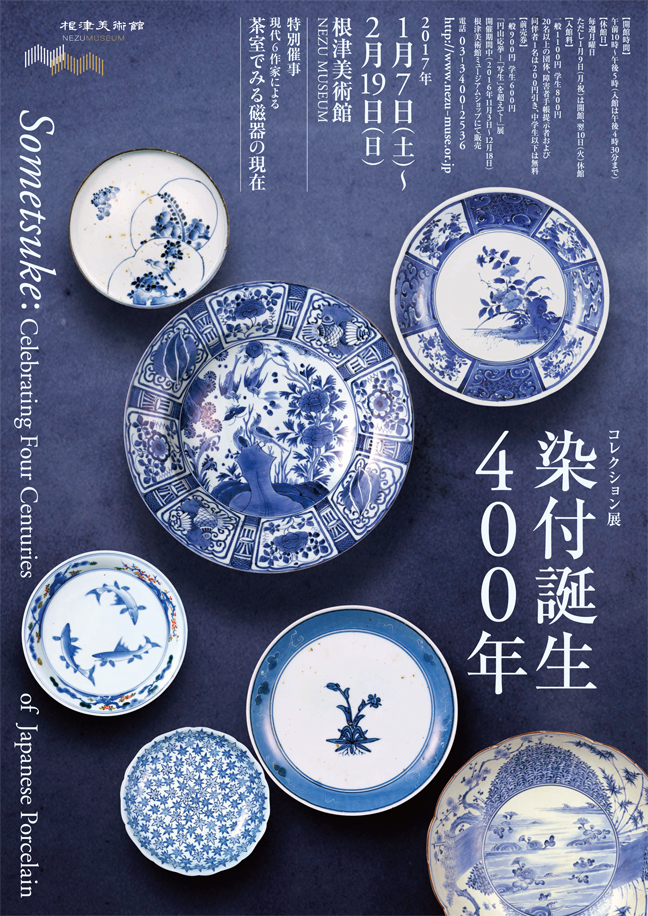

| Closed | Mondays |
|---|---|
| Hours | 10 am to 5 pm(Entrance closes 30 min. before closing) |
| General admission | Adult 1100 yen, Student 800 yen |
| Gallery | 1/2 |
Porcelain, cherished throughout the world, originated in China, which remained its center of production for centuries. In Japan, porcelain production is said to have begun four centuries ago, in 1616, when a potter from the Korean peninsula, Yi Sam-pyeong, fired porcelains in Japan for the first time in Hizen province (now Saga Prefecture). Hizen porcelains, or Imari ware, as they were called, developed dramatically, with underglaze cobalt, white, celadon, and overglaze enamelled porcelains being produced. By the middle of the seventeenth century, their creations were being exported to Europe as well as enjoyed throughout Japan, and the Hizen kilns continued to flourish throughout the Edo period.
This exhibition presents an overview of Hizen porcelains from the seventeenth through the nineteenth centuries. Its core consists of is a group of porcelains donated to our museum in 1998 by Yamamoto Masayuki, a dedicated collector. The Yamamoto Collection is distinguished by its inclusion of many works treasured in Japan, including, pure, elegant underglaze cobalt wares and small Nabeshima pieces. This exhibition offers, through these beautiful wares, an opportunity to experience works that were a treasured part of Japanese lives in the Edo period.
This exhibition of Edo-period Hizen wares will be joined by a special exhibit of porcelains by contemporary artists, displayed in the tea houses in the museum’s garden. Please explore it along with the main exhibition as you enjoy the amazing variety and captivating beauty of four centuries of Japanese porcelains.
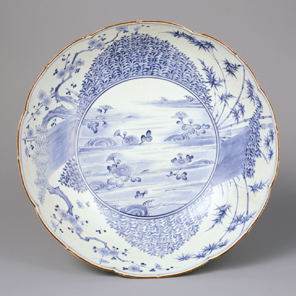
- Foliated Large Bowl with Chrysanthemum on Wave DesignHizen warePorcelain with underglaze cobalt
- Japan Edo period, 17th centuryNezu Museum, Gift of Yamamoto Masayuki
- Chrysanthemums floating in flowing water are depicted in the center of this large bowl. The design on the sides around it is quite novel, with a dynamic depiction, in fine lines, of tilting brushwood fences, bamboo, and plum trees.
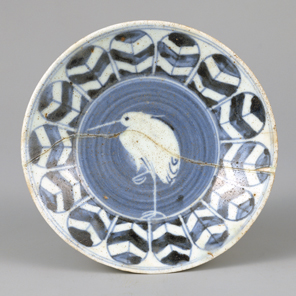
- Dish with Heron DesignHizen warePorcelain with underglaze cobalt
- Japan Edo period, 17th centuryNezu Museum, Gift of Yamamoto Masayuki
- Painting the pine needles directly onto the white ground of the unpainted paper brings a sense of volume to the light, fluffy snow that accumulates on these stately pines. The gold pigment in the background of the pines expresses the brilliant, sunny atmosphere and the sprinkled gold powder used in the lower section of the painting creates a feeling of light reflecting off of the snow. 【On view 11/3 to 11/27】
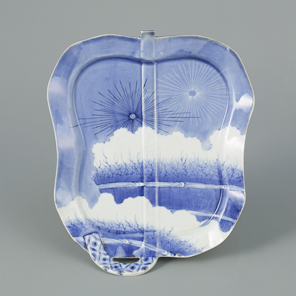
- Battle-fan Shaped Dish with Snow-covered Brushwood Fence DesignHizen warePorcelain with underglaze cobalt
- Japan Edo period, 17th centuryNezu Museum, Gift of Yamamoto Masayuki
- This fan-shaped dish has a design of snow falling on a brushwood fence; the background has been filled in with gosu. The vivid blue of gosu and the pure white of the clay body, which we see as snow, give this dish an air of purity. This piece, created with sophisticated skills, is an example of the adoption of traditional Japanese motifs and forms in porcelain in the Kanbun era (1661-1673).
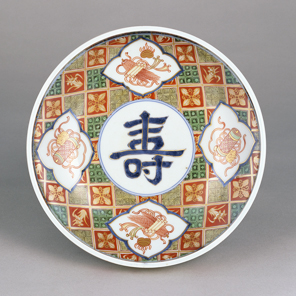
- Bowl with Character for Ju (Longevity)Hizen warePorcelain with underglaze cobalt and overglaze enamels
- Japan Edo period, 17th-18th centuriesNezu Museum, Gift of Yamamoto Masayuki
- This bowl is a superb example of kinrande porcelain, with lavish use of overglaze enamels and gold. The character ju (longevity) in the center is surrounded by four cartouches with treasure motifs; together they fill the bowl with auspicious implications.










